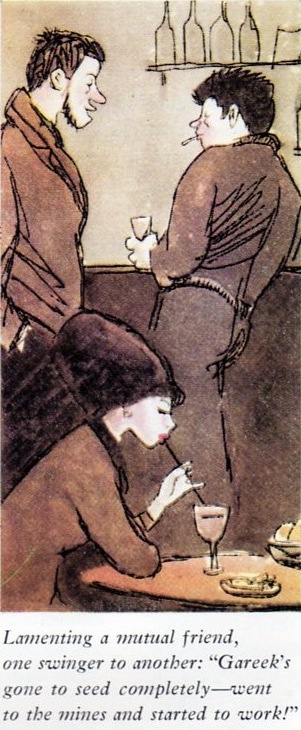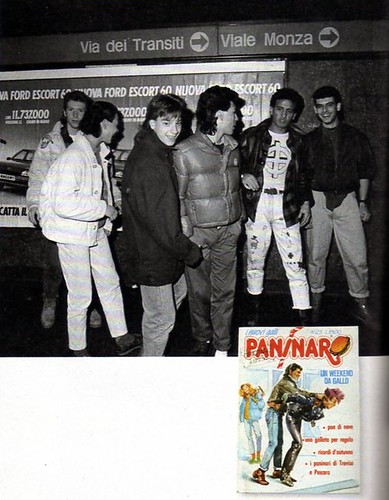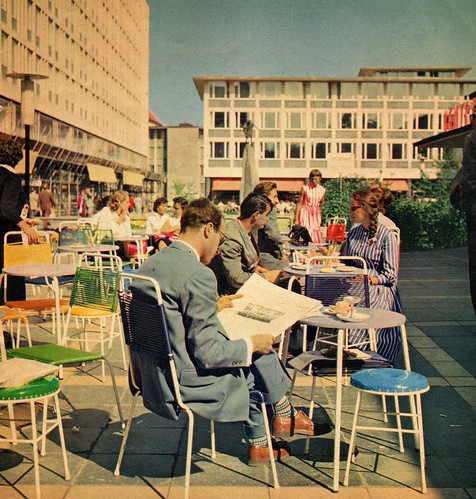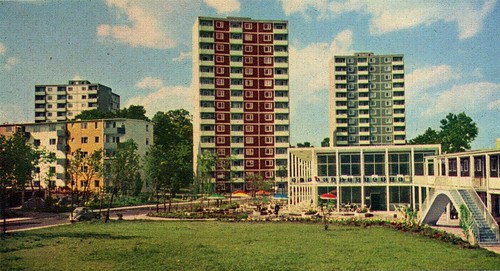These days we hear a lot about so called postmodernism, the more public friendly catch all term related to post-structuralist philosophy. Most people who use it falsely refer to junk postmodernism, the grab bag of cultural signifiers used to sell commodities, epitomized by the mere ironic use of things from the past (i.e. wearing a Stryper shirt) to the far more odious constant referencing of movies, music and fads from the past as a means of discussing a shared experience. The latter of which is rapidly becoming the preferred pass time of young Americans. Of course, postmodernism is much more than this. If you need help learning what this is read some Lytoard, Baudrillard and Debord. Since most folks don’t even know what modernism was/is here’s a little refresher course. Note: Modernism with a capital M can really be brought back to the Renaissance in the realm of ideas, the 1700s in economics and politics, and the cusp of the 1800s in terms of art. Since my expertise is aesthetics I will use the image because it is often the best medium to express the zeitgeist. Here I focus on the 20th century meaning of modernism.
Classical Modernism (1890-1939)
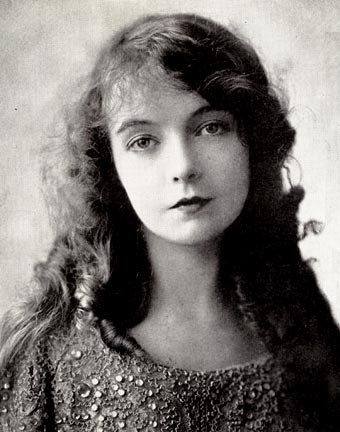
Lillian Gish here with a mysteriously alluring gaze. Art movements and artists include: Symbolism, Orphism, Impressionism, Pointilism, Fauvism, Art Nouveau, Art Deco, Bauhaus, Antoni Gaudi, Futurism, Vorticism, Constructivism, Cubism, De Stijl, Neo-Plasticism, Dadaism, Suprematism, Expressionism, Der Blaue Riter, Pittura Metafisica, Surrealism, Arthur Dove, Ashcan School, American Realism, American Folk Art & Craft, Edward Hopper, Social Realism, Nazi Art.
Let it be said that while Expressionism continues to get the attention as the first modernist art movement, the credit should really go to the Symbolists. Their portrayl of fin de siecle decadence with debutante lasciviousness and occult themes really puts our going away party to shame. Any occult fascists out there need to stop looking for any surviving copies of James Madole's speeches and focus on this. Meanwhile,
Vichy agitprop harks back to bourgeois, quasi-Ancien Regime nostalgia, producing planisme, and setting the stage for High Modernist development.
High Modernism (1945-1977)
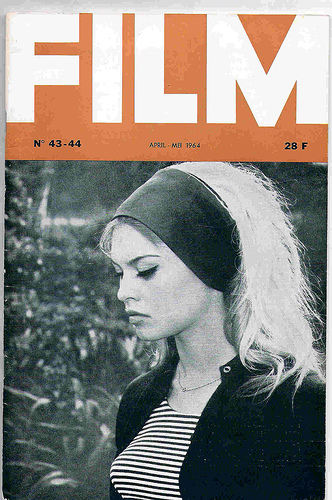
Brigitte Bardot: always sexy, superb French Pop mistress and now contemporary eco-fascisti! Art and architectural movements include: Abstract Expressionism, CoBrA, International Style, Brutalism, LeCorbusier, Frank Lloyd Wright, Richard Neutra, Art Brut, Art Informel, Arte Povera, Pop Art, Op Art, Color Field painting, Nouveau Realisme, Gutai Group, Black Mountain School, Fluxus, Norman Rockwell, Minimalism, Photorealism, French New Wave (film), Underground comix, Earth/Land Art.
With a howdyhowdy American A-0K, the postwar boom produces a trust in the ideals of modernity like never before. Coinciding with this dawning of the American Century, the drunken misogynists of the New York school dominate in the world of paint. While ostensibly celebrating Estadounidense-centric individualism and ruggedness it still manages to be propped up by
spooks in the State Department. Reaping the benefits of some New Amsterdam gimp's corporatist error while gloating over the defeat of fascism proves quite contradictory when the
roots of the New Development become exposed. Nevertheless, this era remains stylistically the tops for Occidental Modernity. Skeptics of the previous phrase need look no further than CoBrA for proto-NatAnarch culture:
Their fundamental values were nonconformity and spontaneity. Their inspiration was children's drawings, the alienated and folk art, motifs from Nordic mythology, Marxism. They rejected erudite art and all official art events. They sought to express combination of the Surrealist unconscious with the romantic forces of nature but unlike the former group they felt an abstract idiom better served that purpose. They were primary distinguished by a semiabstract expressive paintings style with brilliant color, violent brushwork, and distorted human figures.Late Modernism/"Post-Modernism" (1977-Present)

Bearing some resemblence to a certain member of the Martense family, we have this slag as an icon for the miscegenation generation. Even when she's in her Sunday Best she's at best the type of girl you might let blow you at the your friend's wedding after you've had one too many a Maker's Mark mint julep. Art and styles include: Neo-Expressionism, Video Art, "Conceptual" Art, Pop Surrealism, Neo Pop, Photorealism, Collage Revival, Young British Artists, Urbania/Street art/Wiggerism, Performance art, Adobe Photoshop templates, Flash templates, After Effects templates, Art that looks like art from the past, Art that is really visual Identity Politics.
And so we have the famed End of History. Not so much a victory for Fukuyama's vaunted free market as social democracy (see
Kojeve for this one). I'll skip all the adjectives to describe this point in history that any college course will elaborate on and get right to the meat'n'potatoes of the zeitgeist: unoriginality and boredom. Everything has supposedly already been done before so lets just loot the past like a pile of clothes at Dollar A Pound. Rock&Roll ended after grunge and so now it's either rehashing garage rock, psychedelic, or post punk. Good styles nonetheless but why settle for some cardboard facsimile when the global market is giving you access to music actually from that era you never knew about before? Electronic music has actually gotten edgier and less derivative. Film and fiction has gotten progressively worse and are currently lurching in the gutter waiting for some absent minded passerby to accidently step on them. In an era dominated culturally by establishment liberalism (i.e. aggressive mediocrity), the human interest story and the cut-up-narrative novel is all that is churned out, not to mention some forged Holocaust memoir every month. I think there was some sort of silent literary coup d'etat after John Cheever died. This was probably about the time that the MLA went from meaning Modern Language Assocation to Maoist Literary Assembly. Meanwhile, in the realm of politics, the rise of radical Islam as the current radical chic proves once and for all that capital R revolutionaries are really just absolutist, self-righteous Puritans who lack social skills and proper table manners. I'm with Proudhon, the anarchist is simultaneously the biggest radical and the greatest reactionary. Yours truly for the eternal return of the Golden Age of the Occident.

